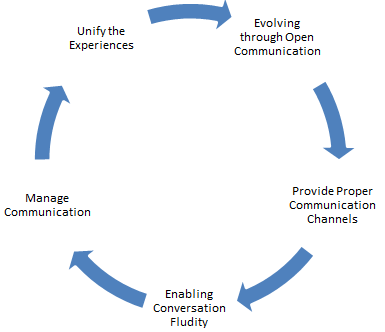Challenging Work as a Driver of Employee Engagement
April 3, 2025
 Challenging Work as a Driver of Employee Engagement
Challenging Work as a Driver of Employee Engagement
Introduction We often hear the term employee engagement being spoken about in various contexts. We are often told by management experts that engaged employees are a source of sustainable competitive advantage. During earlier periods of organizational theory and practice, it was common for the HR (Human Resources) function to take care of administrative aspects such…
 Characteristics of Engaged Workforce
Characteristics of Engaged Workforce
The level of employee engagement can be measured by the willingness and ability of employees to contribute to the success of their organisation. It is their discretionary effort which is an essential element for the good health and well being of a company. A highly engaged workforce shows the high level of engagement in their…
 Benefits of Employee Engagement
Benefits of Employee Engagement
History records how Alexander was able to march on and conquer hitherto unknown lands due his valour and his motivated troops. However, the same history also records, how dissent amongst his troops towards the latter part of his career, cut short his ambitions of supremacy in Asia. Alexander started hiring more outsiders, laying off his…
Various studies have shown that actively engaged employees are almost 50 percent more productive than their not-engaged or disengaged colleagues. The employee engagement cannot be improved only by designing and implementing effective human resource strategies but their involvement and quality of output produced by them also depends on their relationships with their colleagues, subordinates and seniors. It is a basic need of human beings to belong and to be belonged. Such collaborations can be a major contributor to the success of a company.
Until recently, solutions facilitating two-way communication including top-to-bottom and bottom-to-top were given much important but nothing has been done to foster the open communication and collaborations among employees. The way they interact with each other determines the health of any organisation. A perfect balance of respect, care and competitiveness should be prevailed in the organisation to keep them actively engaged in their jobs. Mutual support and healthy relationships contribute majorly to the organisation’s success.
Besides this, empowering employees by delegating them responsibilities and giving them autonomy to take decisions regarding their job on their own can also increase their productivity. It is worth going beyond the traditional management tools of connectivity to help employees remain motivated and dedicated to perform their tasks. To achieve this, the organisations can design effective employee engagement strategies on the basis of the model explained below.

Your email address will not be published. Required fields are marked *